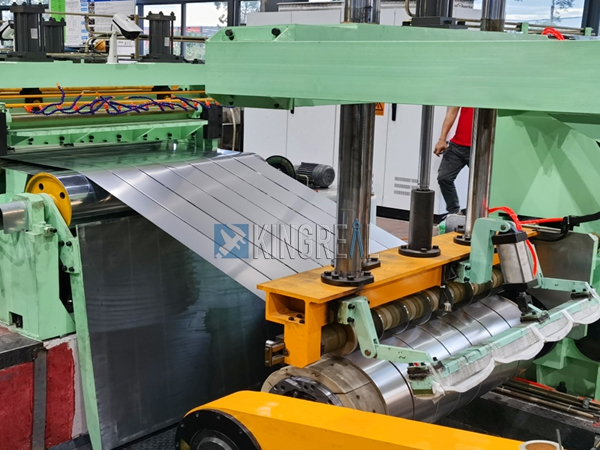What is stainless steel coil slitting?
Stainless steel starts out as bulk metals that are rolled to thinner gauges and then rolled into a large coil. These large, wide coils are called primary coils. The main coil is then cut to narrower widths to meet customer specifications that best suit their manufacturing and process needs.
The stainless steel coil slitting process has three step: uncoiling to flatten the metal, blades (called knives) for cutting, and a coil for coiling the metal back into the coil. These three processes need to be properly aligned to ensure the strip is cut to the proper tolerance.

The equipment can use different circular blades to accommodate different gauge and types of stainless steel used for slitting. It used an upper and a lower knife that can be moved to obtain new strips of different widths. The goal of coil slitting is to maintain the length of the original coil while reducing the width to that required for a particular application.
Combination Metals can cut your stainless steel widths from 0.187" to 51". Cut sheets are sometimes referred to as strip coils, slit coils, rolls, rolled strips, slit strips, strands or strips.
Work-pieces need to be precisely cut with even edges and minimal burrs, which requires tools that remain sharp. Blunt blades give you burrs, waves, cambers and other issues that can cause slit sheets to fail to meet customer requirements.

Application of stainless steel coil
Once your main coil is cut to a narrower width, it can be used in many industries and in many different ways. The main difference in application is the grade or type of steel used.
Some of the more common uses for stainless steel coils are in the manufacture of surgical instrument, springs, heat, ex-changers, and cutlery. The automotive industry is one of the fast-growing users, especially trim and exhaust systems.
Other industries using stainless steel slit coils:
Aerospace
Car
Put up
Consumer product
Electronic produce
Medical
Truck and Trailer Panels/Doors
Oil and Gas Industry








 +86-137 0285 5825
+86-137 0285 5825  sales@kingreal.org
sales@kingreal.org jet-clima
jet-clima